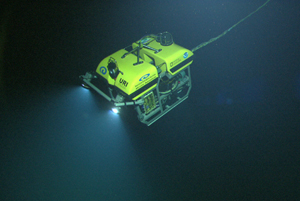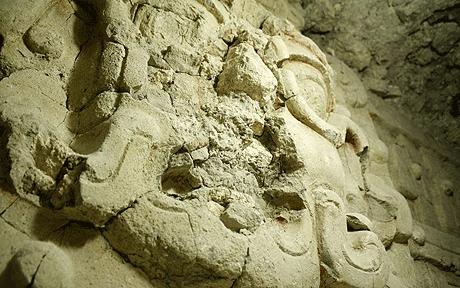
© Radar Science Team, NASA/JPL/CaltechSynthetic Aperture Radar (SAR) map of Ontario Lacus, the largest lake in Titan's southern hemisphere. Radar altimeter tracks show that Ontario lies in a shallow regional basin. The early (June 2005) and subsequent (June/July 2009) outlines of the lake are shown in cyan and blue, respectively. During the four-year observation period the lake receded by ~10 km at places, consistent with an average depth reduction of ~1 m/yr. Inset; Region A with contours of constant distance from shoreline.
On Earth, lake levels rise and fall with the seasons and with longer-term climate changes, as precipitation, evaporation, and runoff add and remove liquid. Now, for the first time, scientists have found compelling evidence for similar lake-level changes on Saturn's largest moon, Titan-the only other place in the solar system seen to have a hydrological cycle with standing liquid on the surface.
Using data gathered by NASA's Cassini spacecraft over a span of four years, the researchers-led by graduate student Alexander G. Hayes of the California Institute of Technology (Caltech) and Oded Aharonson, associate professor of planetary science at Caltech-have obtained two separate lines of evidence showing roughly a 1 meter per year drop in the levels of lakes in Titan's southern hemisphere.
The decrease is the result of the seasonal evaporation of liquid methane from the lakes-which, because of Titan's frigid temperatures (roughly minus 300 degrees Fahrenheit at the poles), are composed largely of liquid methane, ethane, and propane.
"It's really exciting because, on this distant object, we're able to see this meter-scale drop in lake depth," says Hayes. "We didn't know Cassini would even be able to see these things."










